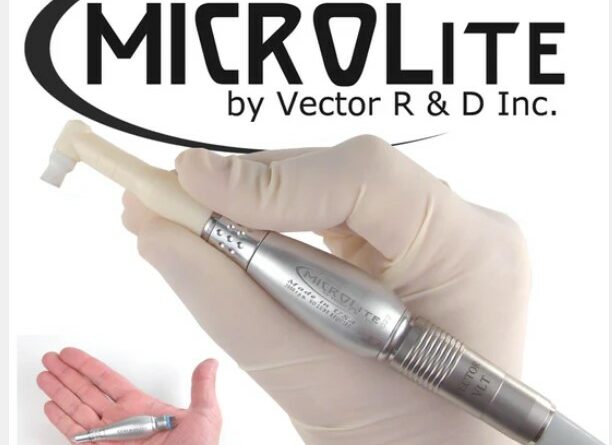Understanding Dental Handpieces: High-Speed vs. Low-Speed and Their Applications
Dental handpieces are indispensable tools in modern dentistry, allowing professionals to perform intricate procedures with precision and efficiency. These instruments fall into two primary categories: high-speed and low-speed handpieces. Understanding the differences between them is crucial for selecting the appropriate tool for specific procedures, ensuring optimal patient care and clinical outcomes.
High-Speed Dental Handpieces
High-speed dental handpieces, also known as air-driven or electric-driven handpieces, operate at speeds ranging from 200,000 to 450,000 RPM (rotations per minute). They are designed for procedures requiring precise cutting, shaping, and removal of tooth structure with minimal patient discomfort.
One of the primary advantages of high-speed handpieces is their efficiency in cutting and shaping. With a water spray cooling system, they prevent overheating and thermal damage to the tooth. Additionally, their small head size improves visibility, particularly in hard-to-reach areas of the oral cavity. Many high-speed handpieces also feature fiber optic illumination, enhancing accuracy during delicate procedures.
These handpieces are widely used in tooth preparation for crowns and bridges, cavity preparation, cosmetic and restorative dentistry, and oral surgery. Their ability to rapidly remove enamel and dentin makes them ideal for procedures that require precise and quick shaping.
Low-Speed Dental Handpieces
Low-speed dental handpieces function at speeds ranging from 5,000 to 40,000 RPM, offering greater control and higher torque. Unlike high-speed handpieces, they are used for procedures that require meticulous precision rather than rapid cutting.
The primary benefits of low-speed handpieces include better control, increased torque, and interchangeable attachments that allow for diverse applications. These handpieces are commonly used for caries removal, polishing and finishing restorations, prophylaxis procedures, endodontic treatments, and adjustments of dentures and appliances.
For polishing and finishing, low-speed handpieces ensure smooth, aesthetic restorations without damaging surrounding enamel. They are also integral in root canal procedures, assisting in shaping and cleaning canals effectively. Additionally, these handpieces play a crucial role in denture adjustments, allowing for precise trimming and contouring of prosthetic devices.
Key Differences Between High-Speed and Low-Speed Dental Handpieces
High-speed handpieces are primarily used for cutting and shaping teeth quickly, while low-speed handpieces excel in detailed work, finishing, and polishing. High-speed models require a water spray system to prevent overheating, whereas low-speed handpieces do not always require cooling. In terms of torque, low-speed handpieces provide more force, making them better suited for procedures that require power over speed.
Air-Driven vs. Electric Dental Handpieces
Dental handpieces are further classified based on their power source, either air-driven or electric.
- Air-driven handpieces rely on compressed air for operation. They are lightweight, easy to maneuver, and more affordable than electric models. However, they tend to be noisier and have less torque.
- Electric handpieces operate with a motorized system, providing consistent torque at all speeds. They are quieter and more precise, ensuring a smoother experience for both dentist and patient. However, they tend to be heavier and more expensive.
Proper Maintenance and Sterilization of Dental Handpieces
To ensure optimal performance and infection control, regular maintenance of dental handpieces is essential. Proper sterilization not only extends the lifespan of the handpiece but also enhances patient safety. Key steps include:
- Cleaning – Removing debris and rinsing the handpiece thoroughly before sterilization.
- Lubrication – Applying manufacturer-recommended lubricants to ensure smooth operation.
- Sterilization – Using autoclaves (steam sterilizers) to eliminate microbial contamination.
- Storage – Keeping sterilized handpieces in a dry, contamination-free environment.
How to Choose the Right Dental Handpiece
Selecting the right dental handpiece depends on the specific needs of a practice. Consider the following factors:
- Procedure Type – High-speed handpieces are best for cutting and shaping, whereas low-speed handpieces are ideal for polishing and finishing.
- Power Source – Air-driven handpieces are lightweight and affordable, while electric models provide higher torque and quieter operation.
- Ergonomics and Weight – A well-balanced handpiece reduces hand fatigue and improves handling.
- Durability and Cost – Investing in high-quality, autoclavable handpieces ensures long-term cost-effectiveness.
Conclusion
Understanding the differences between high-speed and low-speed dental handpieces is crucial for optimizing clinical efficiency and patient comfort. High-speed handpieces are perfect for cutting and shaping, while low-speed handpieces provide precision and control for polishing, finishing, and restorative work. By selecting the right tool for the job and maintaining proper sterilization protocols, dental professionals can ensure high-quality care and improved procedural outcomes.




